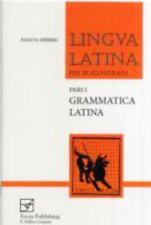Picture 1 of 1

Stock photo

Picture 1 of 1

Stock photo

Sather Classical Lectures: Everyday Writing in the Graeco-Roman East by Roger S. Bagnall (2012, Trade Paperback)

Great Book Prices Store (338132)
96.6% positive feedback
Price:
$34.31
Free shipping
Returns:
14 days returns. Buyer pays for return shipping. If you use an eBay shipping label, it will be deducted from your refund amount.
Condition:
Reinterpreting the silences and blanks of the historical record, leading papyrologist Roger S. Bagnall convincingly argues that ordinary people—from Britain to Egypt to Afghanistan—used writing in their daily lives far more extensively than has been recognized.
Oops! Looks like we're having trouble connecting to our server.
Refresh your browser window to try again.
About this product
Product Identifiers
PublisherUniversity of California Press
ISBN-100520275799
ISBN-139780520275799
eBay Product ID (ePID)110980916
Product Key Features
Number of Pages200 Pages
Publication NameEveryday Writing in the Graeco-Roman East
LanguageEnglish
Publication Year2012
SubjectArchaeology, Ancient / General, Communication Studies, Ancient Languages (See Also Latin), Graffiti & Street Art, Ancient & Classical, Paper Ephemera
TypeLanguage Course
Subject AreaLiterary Criticism, Foreign Language Study, Art, Language Arts & Disciplines, Social Science, Antiques & Collectibles, History
AuthorRoger S. Bagnall
SeriesSather Classical Lectures
FormatTrade Paperback
Dimensions
Item Height0 in
Item Weight9.6 Oz
Item Length0.9 in
Item Width0.6 in
Additional Product Features
Intended AudienceScholarly & Professional
LCCN2010-023442
ReviewsIlluminating. . . . There is little to critique in this engaging contribution from a seasoned papyrologist and ancient historian.
Dewey Edition23
Series Volume Number69
Dewey Decimal302.2/24409394 2 22
Table Of ContentList of Illustrations Preface Introduction 1. Informal Writing in a Public Place: The Graffiti of Smyrna 2. The Ubiquity of Documents in the Hellenistic East 3. Documenting Slavery in Hellenistic and Roman Egypt 4. Greek and Coptic in Late Antique Egypt 5. Greek and Syriac in the Roman Near East 6. Writing on Ostraca: A Culture of Potsherds? Conclusion Notes Bibliography Index
SynopsisMost of the everyday writing from the ancient world-that is, informal writing not intended for a long life or wide public distribution-has perished. Reinterpreting the silences and blanks of the historical record, leading papyrologist Roger S. Bagnall convincingly argues that ordinary people-from Britain to Egypt to Afghanistan-used writing in their daily lives far more extensively than has been recognized. Marshalling new and little-known evidence, including remarkable graffiti recently discovered in Smyrna, Bagnall presents a fascinating analysis of writing in different segments of society. His book offers a new picture of literacy in the ancient world in which Aramaic rivals Greek and Latin as a great international language, and in which many other local languages develop means of written expression alongside these metropolitan tongues.
LC Classification NumberPN211
All listings for this product
Be the first to write a review








![Genki: an Integrated Course in Elementary Japanese I Textbook [third Edition] by Banno Eri (2020, Trade Paperback)](https://i.ebayimg.com/thumbs/images/g/sH4AAeSwZydnvKzY/s-l225.jpg)
![Genki: an Integrated Course in Elementary Japanese I Workbook [third Edition] by Banno Eri (2020, Trade Paperback)](https://i.ebayimg.com/thumbs/images/g/lN0AAeSw5A9oBTZ4/s-l225.jpg)
















